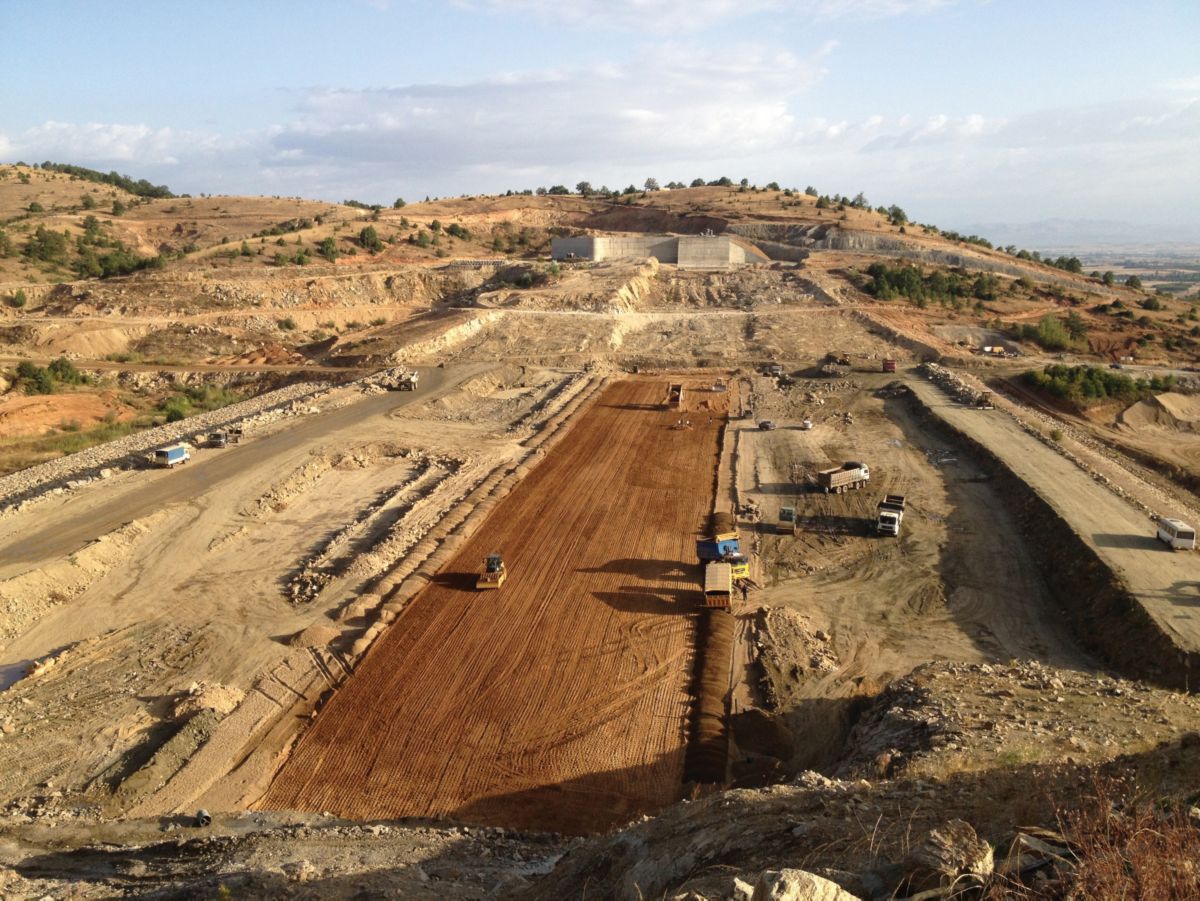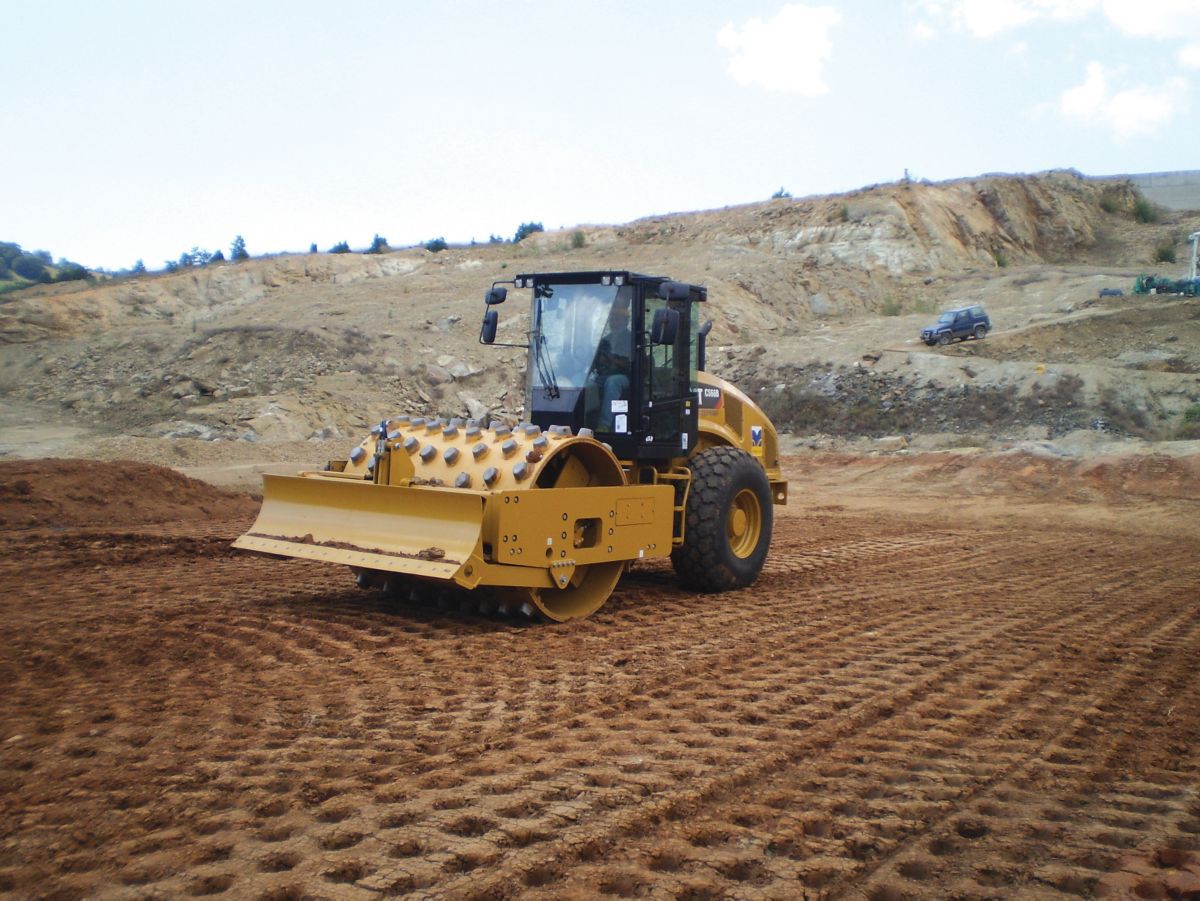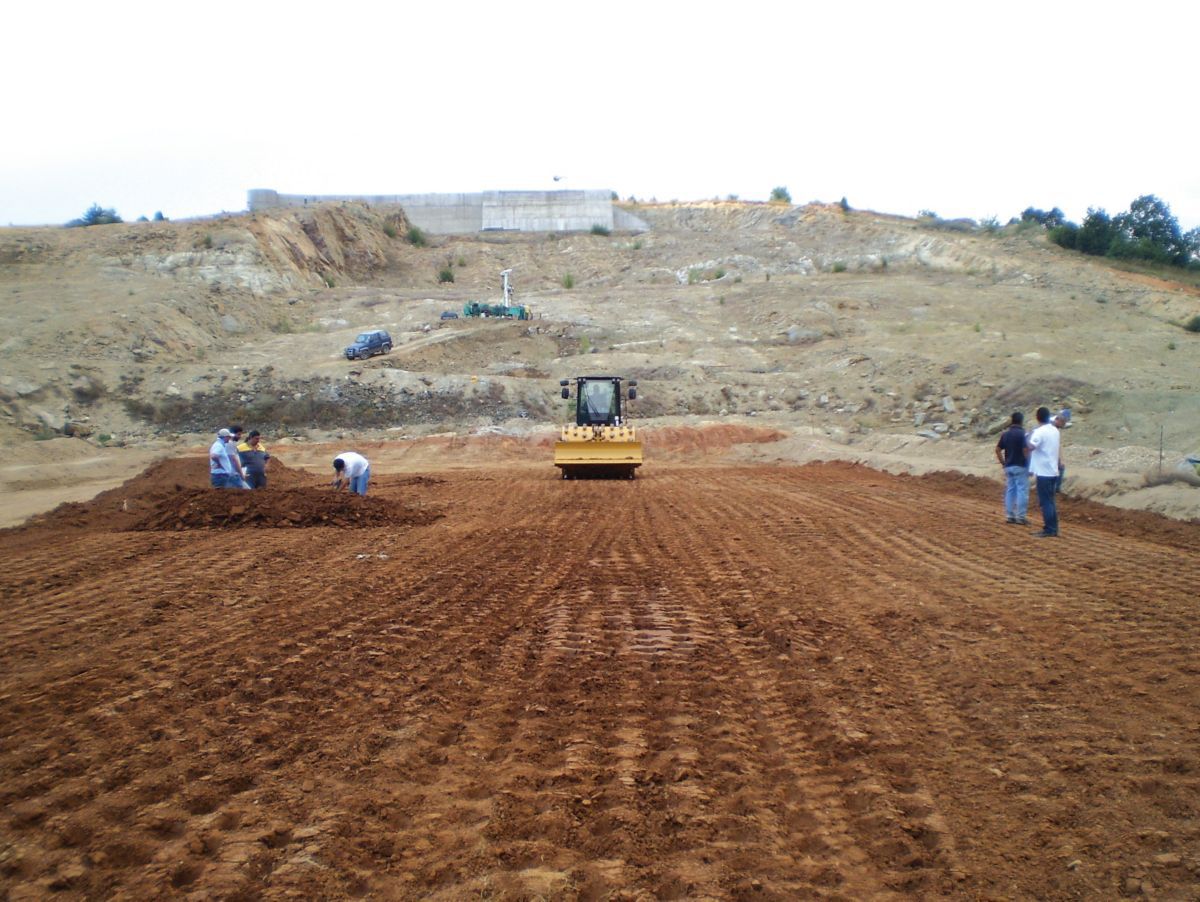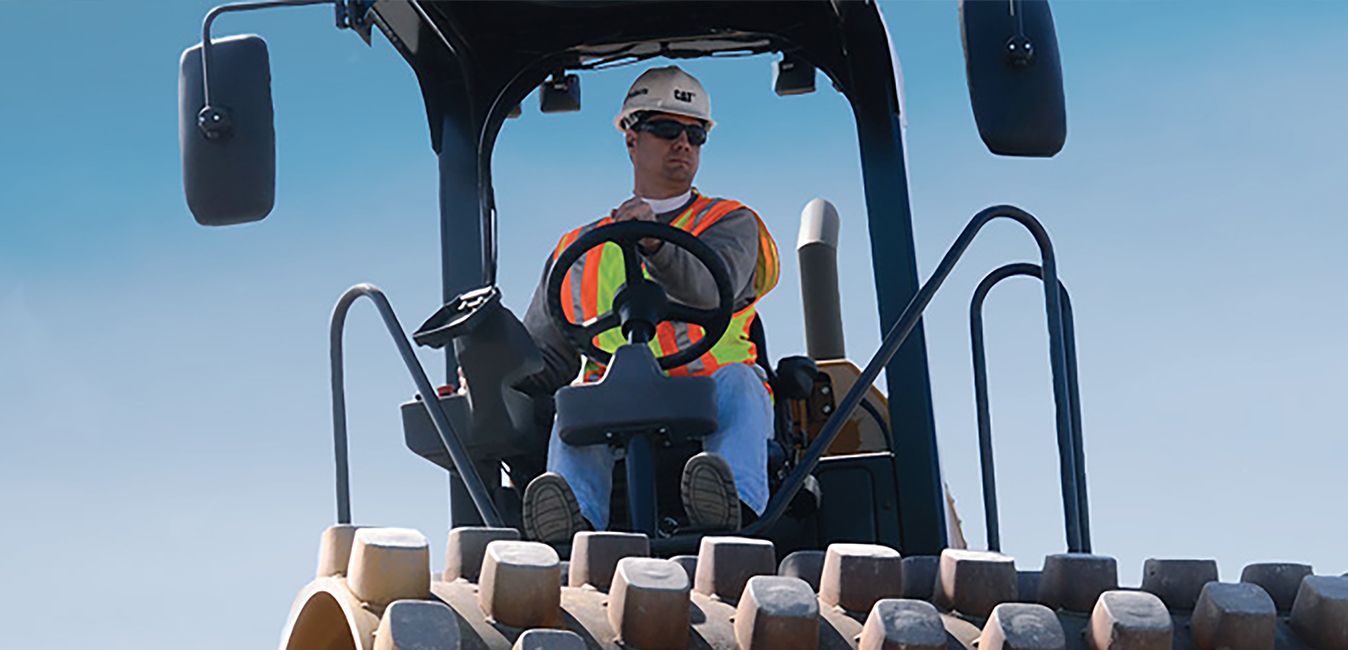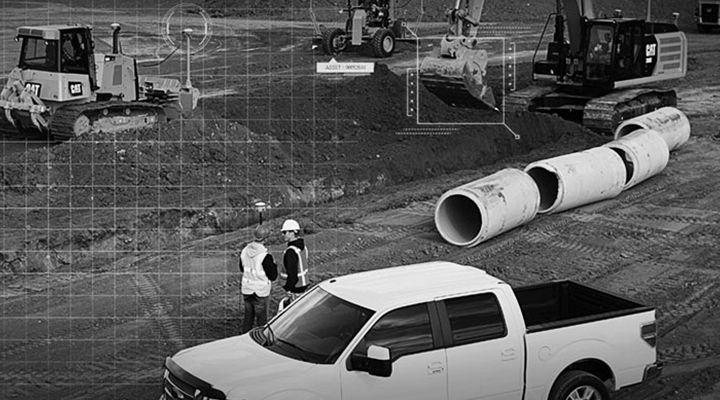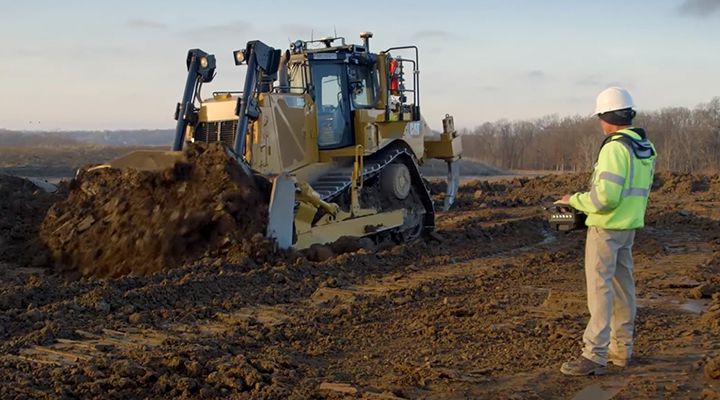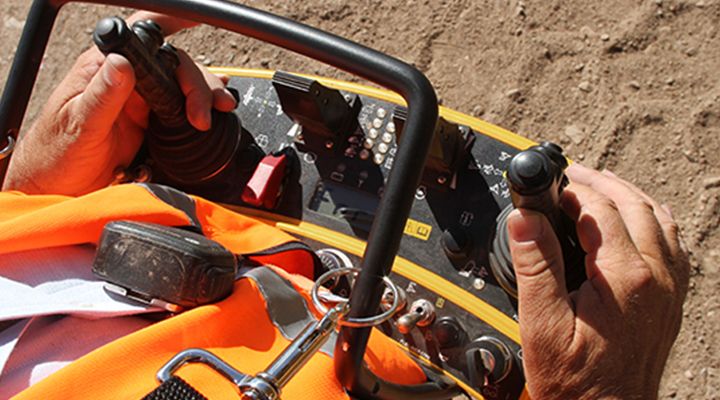If you already have an existing account with another Cat App, you can use the same account to sign in here.
One Account. All of Cat.
Your Caterpillar account is the single account you use to log in to select services and applications we offer. Shop for parts and machines online, manage your fleet, go mobile, and more.
Account Information
Site Settings
Security
MDP Case Study
Machine Drive Power Helps eliminate thousands of passes,
more than doubles working speed
George Nathanailidis and his TENA SA crew faced an enormous soil compaction challenge on a dam jobsite near Triantafullia in northern Greece.
TENA was responsible for placing 42 m (138 ft) of compacted materials on an existing embankment of 33 m (108 ft). The earthmoving volume for the massive earthen dam exceeded 350,000 m3 (457,765 yd3). The material had to be applied in 20 cm (7.8 in) layers and compacted to 15 cm (5.9 in)—at a length of 364 m (1,194 ft) and at a width of 18 m (59 ft).
Volume was only part of the challenge. “We worked in sandy clay,” Nathanailidis says. Achieving uniform compaction would prove difficult, while monitoring densities would be challenging and less than comprehensive.
TENA SA turned the nightmare job into a dream with the help of new machine-integrated soil compaction measurement technology called Machine Drive Power, or MDP.



“MDP saved us considerable time and certainly money,” says Nathanailidis, president and chief executive officer of TENA SA, one of the largest construction companies in northern Greece.
Nathanailidis has numbers that support the statement:
- In compacting approximately 280 layers, he estimates the use of MDP enabled him to eliminate a stunning 9,520 passes, or 34 passes per layer, with an average length of 364 m (1,194 ft) per pass.
- Productivity was more than doubled on the passes that were still required, as MDP also enabled the Cat® CS66B Soil Compactor to increase its working speed from 2 km/h to 4.5 km/h (from 1.2 mph to 2.8 mph).
- TENA SA reports several other key MDP benefits, beyond the productivity improvements.
- MDP proved reliable in clay soils, where an accelerometer-based system would suffer from high variability—and therefore provide questionable readings. Without MDP, TENA SA would not have been able to show that target densities were achieved—and the passes would not have been eliminated.
- Quality control was improved by spotting problems early and taking immediate corrective action.
MDP Defined
MDP is a significant change in compaction measurement technology. It is not a breakthrough in how machines compact. Instead, it evaluates the rolling resistance.
That resistance provides an indication of soil stiffness and load-bearing strength, and whether compaction is adequate to structurally support the road, parking lot, building or whatever is planned for the site.
"MDP SAVED US CONSIDERABLE TIME AND CERTAINLY MONEY."
The ultimate benefit of MDP, a proprietary technology developed by Caterpillar, might be summed up in one word: uniformity. Is the entire site compacted the same way, or are there areas where structural integrity is compromised?
Historic methods of testing can only provide a snapshot and are no guarantee of uniformity. Typically only 1 percent of the jobsite is tested. MDP acts as a proof roller while it works, enabling much faster discovery of inconsistencies across the entire jobsite. It works in any type of soil and performs whether the compactor is smooth or padfoot, vibrating or static.
The Dam Jobsite
Before the Triantafullia dam project began, authorities set the following requirements to ensure proper compaction:
- A rolling speed of 2 km/h (1.2 mph)
- 12 passes with the roller
- When work started, the authorities tested MDP findings against other on-site measurements. They were impressed with MDP’s consistency, and their trust grew enough for them to make significant adjustments.
- The number of passes required was reduced from 12 to eight because MDP indicated targets were reached in four fewer passes than originally required.
- Rolling speeds for the remaining passes were increased from 2 km/h to 4.5 km/h (1.2 to 2.8 mph), as MDP showed the desired results were also being achieved at the much higher speed.
“I would recommend others use it because of fast measurement compaction, accuracy, reliability and increased productivity,” Nathanailidis says.
RELATED ARTICLES
You’re here to get ideas to grow your business. Read on for machine insights and expert tips and tricks to get more out of every job.
-
Productivity - More Efficiency. Better Results.
Cat® Technologies gives you the accuracy, consistency and productivity you want.
Learn More -
Automation & Autonomy: What's the Difference?
These words get used interchangeably, creating confusion. To improve consistency, we've defined these terms.
Learn More -
Machine Control & Automation Can Add To Your Bottom Line
Technologies that enhance machine performance can add to the bottom line.
Learn More -
Ask the Expert
Answers on fuel efficiency from an expert - Jason Hurdis, GCI Global Market professional.
Learn More


